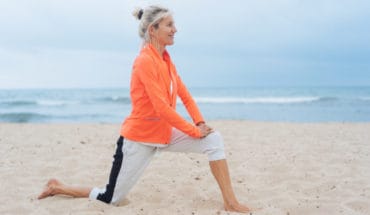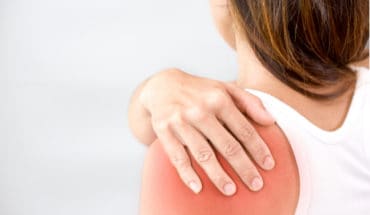Are you one of the millions of people in the UK feeling the effects of Brexit Strexit – in other words, you are demoralised, confused and worried that no one in authority seems to have a clue about what to do next? Unfortunately, you can’t do much to change the current situation, but you can change the way you feel by simple changes to the way you hold yourself. Our bodies are amazing biomechanical instruments and the work beautifully when they are used properly. People who are depressed often subconsciously adopt poor postures that reflect their state of mind, and this can have a knock-on effect on the biomechanics of the body.
Luckily, if you are aware of this, you can make changes which will be beneficial. The link between upright posture and better response to stress has already been established in many scientific trials. Here are very simple strategies to ease the strexit and deprexit that may be contributing to your low mood right now.
Sit up straight
In one 2015 trial, published in the journal, Health Psychology, researchers found that people who sat up straight were more likely to report higher self-esteem, better mood and low fear than those who were slumped over during the tests. Even the way they talked was different. The slumpers used more negative emotion words, first-person singular pronouns, affective process words, sadness words, and fewer positive emotion words and total words during the speech. They concluded that sitting upright may be a simple behavioural strategy to help build resilience to stress.
This might be because an upright posture allows the body to be in perfect balance with muscles in the correct alignment, so the body is put under minimum strain. Nerves and blood vessels are also able to operate to their maximum ability.
Walk tall
When you walk, keep your head up, your shoulders back and down so you feel you are able to carry the weight of the world on your shoulders.
A good walking posture, which includes an easy stride with arms swinging gently at your sides, should spread the weight evenly without putting any particular area such as knees or hips under strain. Studies show that good upright posture could help to reduce high blood pressure and improve cardiovascular health.
Face the world head on
The most comfortable position for your head and neck is facing directly forwards. And this applies even when you are sleeping. I know many people like to sleep on their fronts with the head to one side, but this is not the ideal posture for the body. You should try and maintain your spine in a neutral position whether you are waking or sleeping. Better is to fall asleep on your back with your head gently supported facing up to the ceiling.
If you have a medical condition or injury, consult your GP or physiotherapist before doing these exercises.
Stand tall
This exercise will help you combat the effects of the round-shouldered desk slump, and remind your body what it feels like to really stand up straight.
Find a blank section of wall and stand tall up against it, with your heels touching it. Make sure that your shoulder blades and bottom are in contact with the wall. There should be a gap between your lower back and the wall, to keep its natural arch. Now try to place the back of your head against the wall by tilting your chin downwards slightly. Imagine a piece of string pulling the back of your hair up. Stand here for 30 seconds and then step away, maintaining this newly straightened posture.
Back pain reliever
Most of us spend too much time sitting down, and this shortens our anterior hip muscles (a group of muscles that attach to the front of the pelvis in various ways – namely the hip flexors, quadriceps and psoas). In turn, this pulls the pelvis forward into a tilt to the front, and can eventually lead to back pain and poor posture because it creates an exaggeration to the curve of our lumbar spine. By stretching these muscles, we help to keep our pelvis in neutral alignment,
Kneel down, then place your right leg out in front of you at a 90-degree angle. Put your hands behind your head and push your left hip forwards. You will feel the stretch through the front of your left hip and front of the thigh. Hold for 30 seconds. Don’t lean forward, but keep your shoulders over your hips.” Go back to kneeling and repeat on the other side. Try this five times a day.
Back strengthener
Get down on all fours, with your hands under your shoulders and knees under hips, eyes looking at the floor. Breathe deeply. As you exhale, lift your right arm and left leg out straight, to be level (or as close as you can get) with your body. Don’t lean into your right hip to support yourself – counterbalance by engaging your core-stability muscles instead. They’re like a corset wrapped around your middle – imagine pulling it in tight. Inhale, and lower your arm and leg back to the starting position, ensuring that both touch the floor at the same time. Exhale, and raise the opposite arm and leg. Inhale, and lower. Keep moving with each breath.” Aim for 10-20 raises in total.
Spine relaxer-this is more Alexander and can be dropped
Use books to make a 6cm-9cm support for your head, or whatever feels comfortable. If your chin is dipping towards your chest, take a book away. Bend your knees to bring your feet flat on the floor, and keep the knees slightly wider than hip-width apart. Now, keeping your elbows resting on the floor, bring your hands to rest somewhere between your lower ribs and hips, wherever feels comfortable. Stay in this position for 10-20 minutes and feel your spine, slowly but surely, relax and soften.”
- Belt up for health - 25th April 2017
- The physical toll of terrorism - 27th March 2017
- The Good Sleep Expert relaxation podcast – progressive muscle relaxation - 25th March 2017







